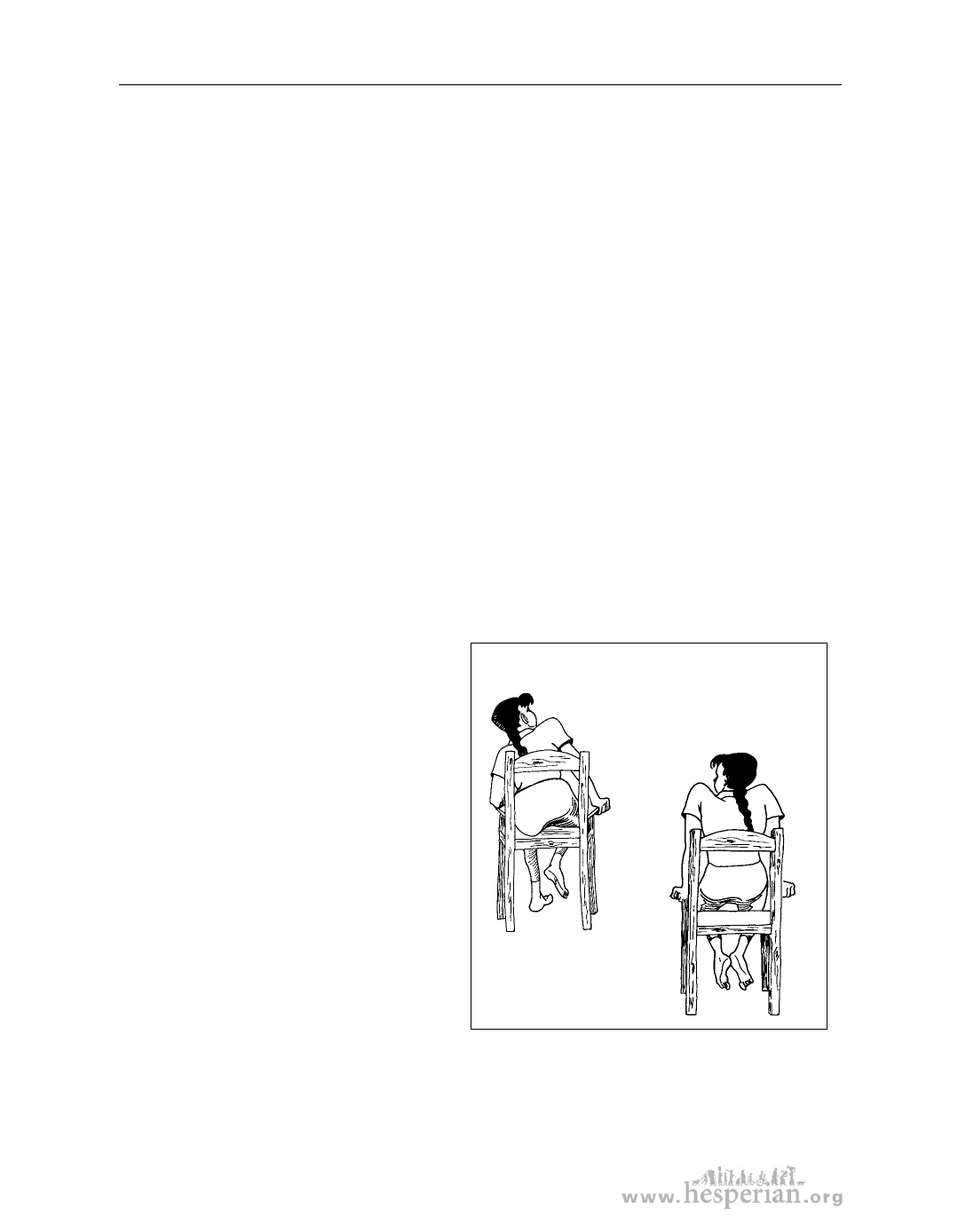
116 chapter 5: Taking care of your body
If a pressure sore gets infected
If the pressure sore has a bad smell and is swollen, red, and hot, or if you have
fevers and chills, the sore has become infected. It is best to go to a health worker
who can find out what germs are causing the infection and what medicine will
work best. If that is not possible, you can use an antibiotic, such as doxycycline,
erythromycin, or dicloxacillin (see the Green Pages for information about using
these medicines).
• Pressure sores heal from the inside out, so you will notice the sore gradually
start to fill in. This will not happen quickly, so try to be patient.
• If necessary, take paracetamol for pain (see page 350).
If you have lost feeling in part of your body, it is important for you, and your
family and caregivers, to learn as much as possible about pressure sores and how
to treat and prevent them. Pressure sores are very common in persons with spinal
cord injury. Often the sores start in hospitals shortly after the injury, because the
injured person does not get moved enough from one position to another to relieve
pressure. With proper attention, no one should get pressure sores.
Preventing pressure sores
Even if you cannot make big movements, try to move or shift your weight at least
every 2 hours. If you lie down all the time, have someone help you change position
if you cannot easily move yourself.
Try putting a pillow or soft blanket If you sit all day...
roll where your skin rubs together, such
as between your knees or between your
head and your arms. You can also lie
or sit on something soft that reduces
pressure on bony areas. A cushion or
sleeping pad that has hollowed-out areas
around the bony parts will help. You can
make a simple cushion or sleeping pad
from a plastic bag filled with uncooked
beans or rice. It must be refilled with
new rice or beans once a month. If you
use a wheelchair, try to make sure you
always sit on a good cushion.
...or lean over
from side to side.
...lift your bottom by
pushing yourself up
with your hands...
A Health Handbook for Women with Disabilities 2007